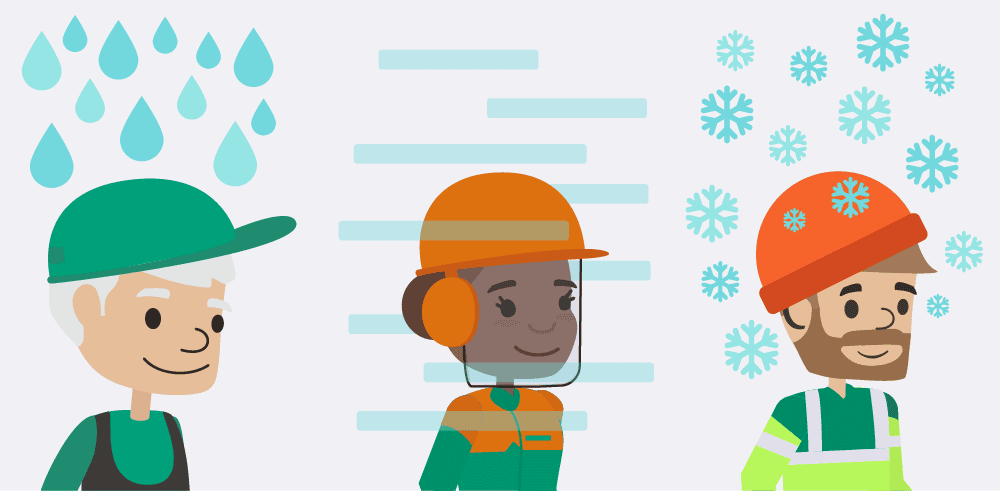
For those working outside, at heights or on the road, autumn and winter can bring a higher risk of injury.
With the colder weather comes a number of risks:
Adverse weather can even affect those in low-risk roles –particularly while workers are commuting.
If you work in a role that is affected by inclement weather, or if you employ staff members that do, this article will provide some helpful advice.
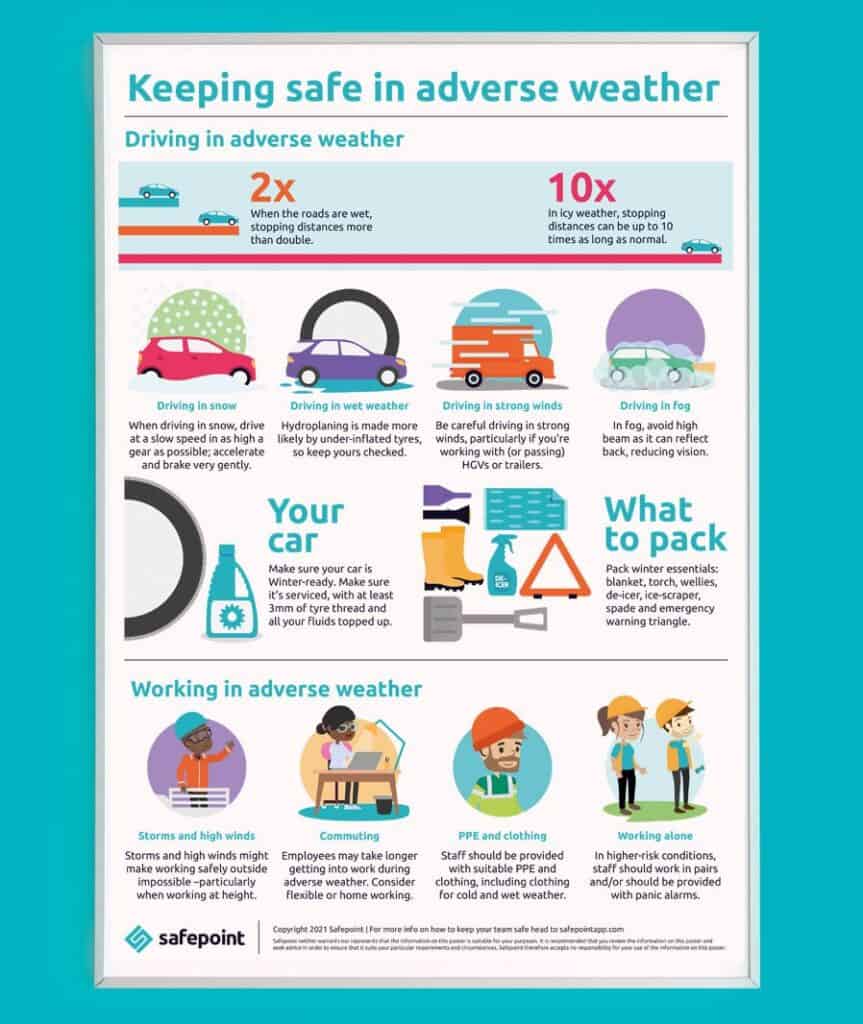
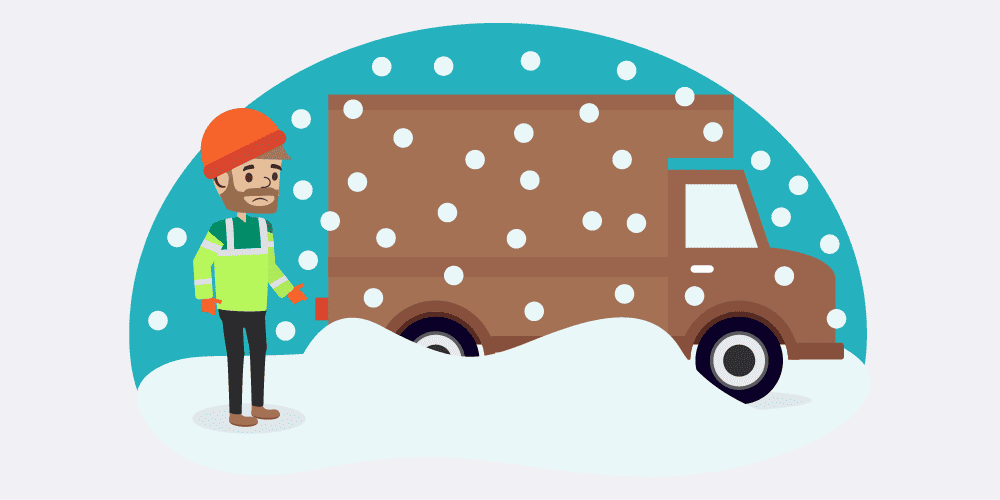
For those that drive into work or –most crucially– those that drive as part of their job, it is important to know the risks of driving in severe weather, and how to do so safely.
According to UCL, About 1 in 3 deaths, 1 in 5 seriously injured casualties and 1 in 4 casualties of all severities on the road are sustained when someone is driving for work.
This is why we think it’s important to remind professional drivers (lorry drivers, delivery drivers, couriers and taxi drivers to name a few) of some important safety tips.

Speed
In rain, snow or fog, slow down. 1 in 9 road deaths in Great Britain are caused, in part, by driving too fast for the conditions. Employers should encourage their staff to drive more slowly and carefully, and should give them more time to get from place to place.
Stopping distances
Leave more space for stopping. This goes hand in hand with reducing your speed. Fog, rain and snow can reduce visibility while stopping distances can be twice as long in rain and 10 times as long in snow.

Driving in snow
When driving in snow, the highway code says drivers should ‘drive at a slow speed in as high a gear as possible, and accelerate and brake very gently’.

Driving in strong winds
You should be extra careful driving in high winds –particularly if you are driving or passing a large vehicle (like a lorry, bus or a car with a trailer), or if you are riding or passing a bike.
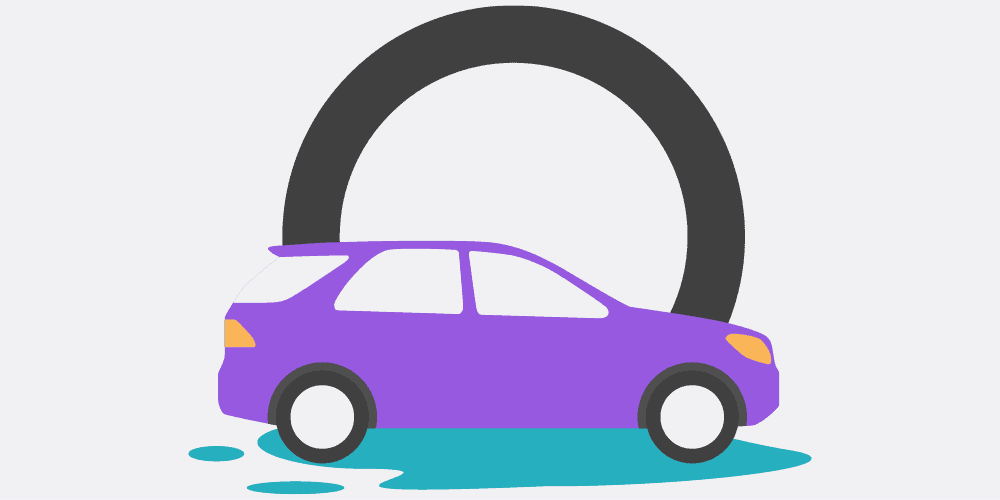
Driving in wet weather
As well as the increase in stopping distance –and decrease in visibility– associated with driving on wet roads, water on the ground also creates the risk of hydroplaning (also known as aquaplaning).
To help prevent hydroplaning you should drive more cautiously. You should also make sure your tyres are at the right pressure. Under-inflated tyres can make hydroplaning more likely.
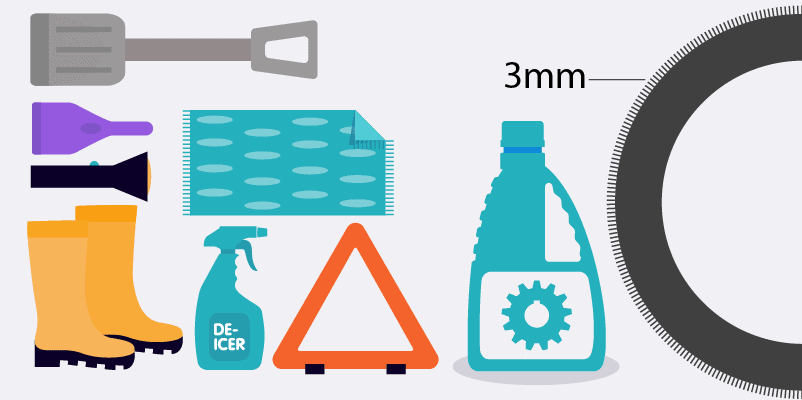
To make sure your car is winter-ready, make sure it’s serviced, with at least 3mm of tyre tread and all your fluids topped up.
Keep winter essentials in your car: blanket, torch, wellies, de-icer, ice-scraper, spade and emergency warning triangle.

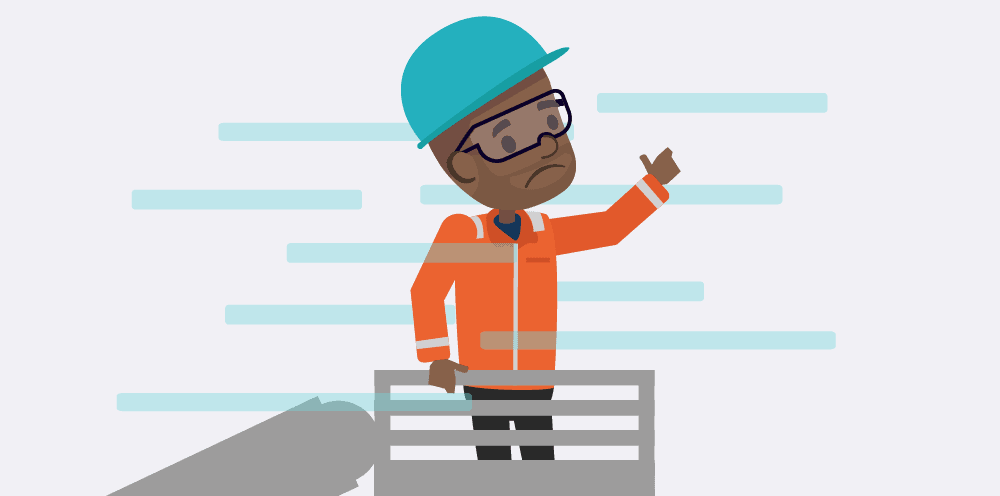
Working in strong winds
Strong winds and storms can make working safely outside impossible. If your team works outside, you should keep an eye on weather reports so that you can prepare for strong winds. You may have to make provisions or halt work altogether, and it’s better to know that ahead of time. This advice should be of particular importance for those working at height.
When expecting strong winds and gales, it may not be enough to halt working; your team will also need to work to safeguard your workspace and equipment. Tools, building materials and even structures such as scaffolding can be affected by strong winds.
Standard safety equipment such as hard hats and harnesses become even more important during strong winds. Safety glasses can also protect the eyes from wind-blown dust and other particles.

Commuting in adverse weather
The safest way to handle adverse weather is to not go out in it. For office-based roles, it might be best to forgo the daily commute during severe weather and, instead, encourage people to work from home. For managers and bosses, preparing a work-from-home system before a serious weather event (like a snowstorm) can make the transition much smoother.
If your staff have to come into the office –or go out on-site– during severe weather, employers should be understanding that they may take longer to commute between locations.
More than understanding, however, you should encourage your staff to travel more slowly between locations. If your staff do a lot of driving for work, then this may affect their productivity. Make this clear to your staff to avoid them rushing and, thereby, risking an accident.

Working in cold weathers
Employees will need to be provided with appropriate clothing for the weather –such as appropriate jackets to deal with the cold and wet.
In cold weather, employees should also be encouraged to drink hot drinks and take regular rest breaks. They should also be provided with facilities for warming up.
Employers will also need to educate their staff on how to avoid cold stress. More information can be found at the Health and Safety Executive.
Working in low-risk roles in adverse weather
Employers have a responsibility to provide a ‘reasonable working temperature’ in workrooms –which is typically seen as at least 16°C, or 13°C for strenuous work.
There are, of course, situations where this may not be possible, in which case localised solutions (such as a fan near hot-running machinery), or PPE (such as a thermal jacket for walk-in freezers) should be provided. More info can be found at the HSE.
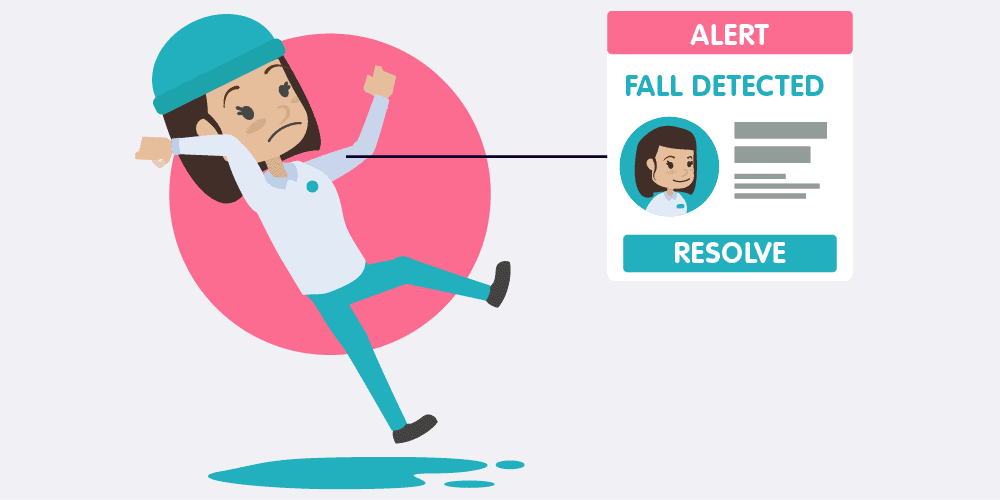
Working alone in adverse weather
As discussed, the best way to avoid the risks of severe weather is to move the work to a different place or a different time. There are certain situations, such as working at a height in a gale, which should be absolutely avoided.
For many situations, however, the heightened risk from severe weather may simply require that your staff work in pairs (or teams). If this is not possible or desirable, your staff may need additional support in calling for help, in the case of an emergency situation.
In these cases, when a staff member is working alone in a higher-risk situation, it is important to assess their risks as a lone worker. If you’ve not thought about lone working before, we have a great introduction, here.
However, in the case of working alone in adverse weather, the risks can be even greater. Whether your staff are driving, walking, working at a height or on the ground, you may need additional ways to check in on them, and to be alerted should they suffer an injury.
In fact, the HSE says employers should provide ‘training, supervision, monitoring and support for lone workers’ including ‘adequate and reliable means of communication and a way to call for help’. One way of making this easier is with a lone worker device.
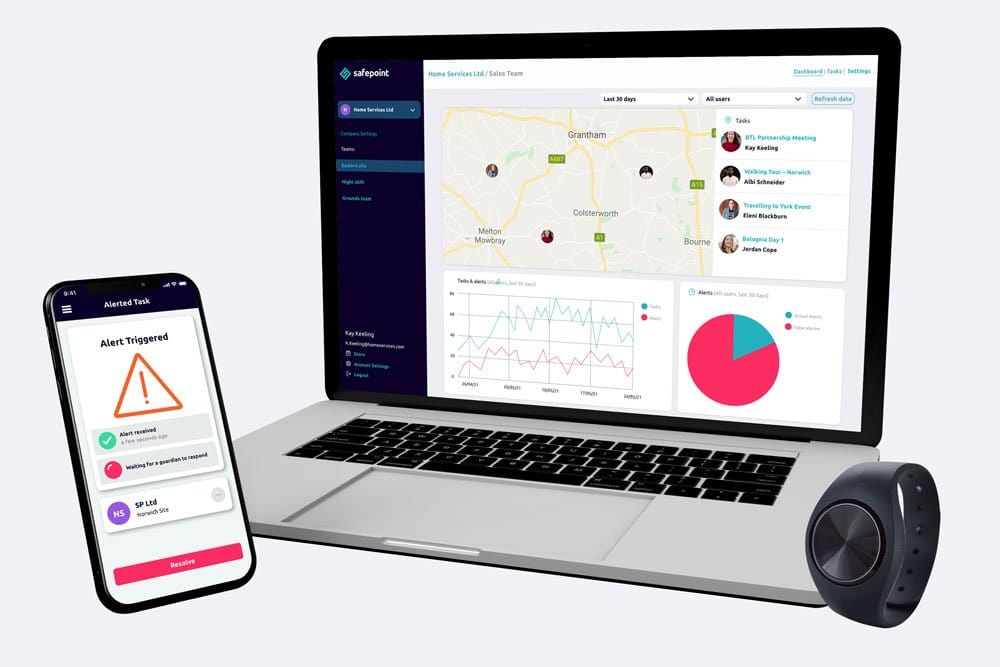
Safepoint provides easy to use lone worker apps, clever wearable devices, a robust online team management system and 24/7 protection through their GuardianPlus Alarm Receiving Centre. Here are some of the benefits you can expect from using Safepoint’s lone worker alarm system:
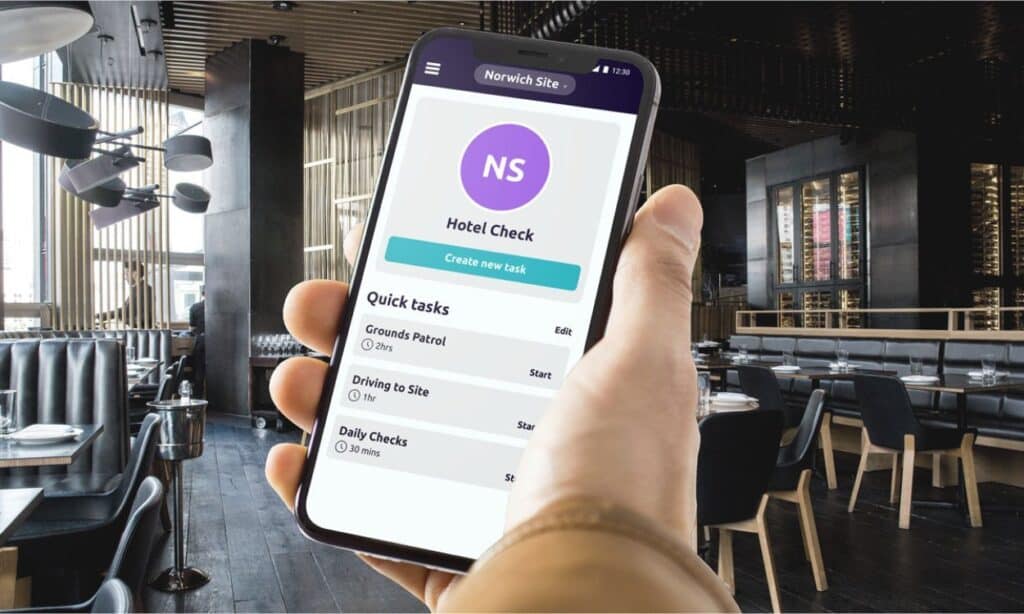
Easy to use app –through the Safepoint app, lone workers can set up customised timed ‘tasks’. If the worker fails to check in as safe before the timer runs out, an alarm is automatically raised. A user can also request emergency assistance at any time through a single tap of the app.
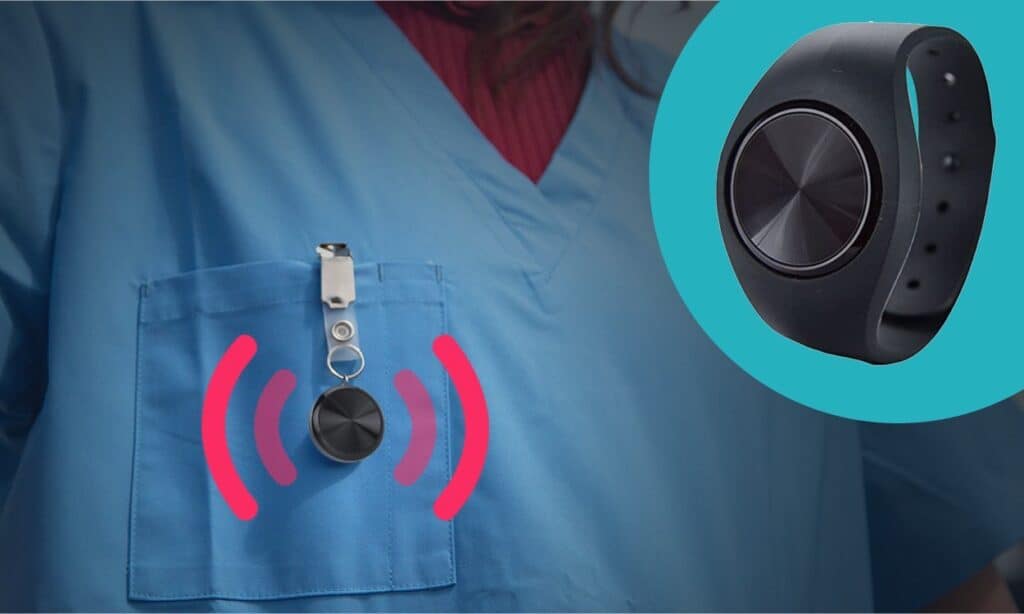
Discreet yet durable wearable devices – with Safepoint’s wearable panic alarms (which can be worn on the wrist, on a key ring or on a lanyard), lone workers can easily and surreptitiously request emergency help without ever touching their phone. What’s more, the alarm has a built-in fall detection (man-down) system –perfect for working in wet or icy conditions.
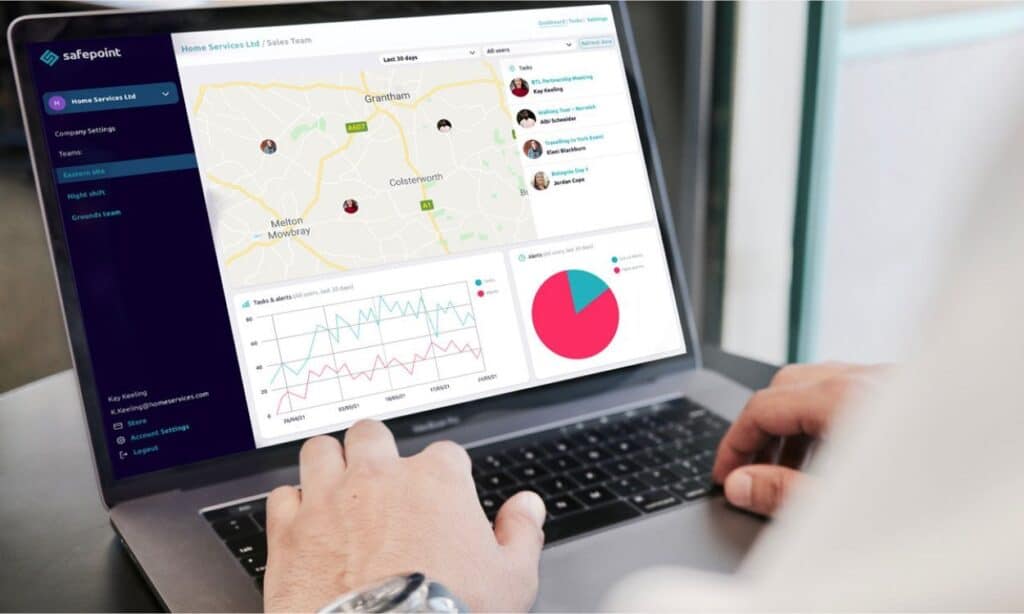
Powerful team management – through the Safepoint Web Portal, companies can easily oversee their whole team. In the Portal, you can see where your team members are, what tasks they’re doing and, of course, manage any emergencies as they happen. You can also see historical data and analytics on your team’s safety status
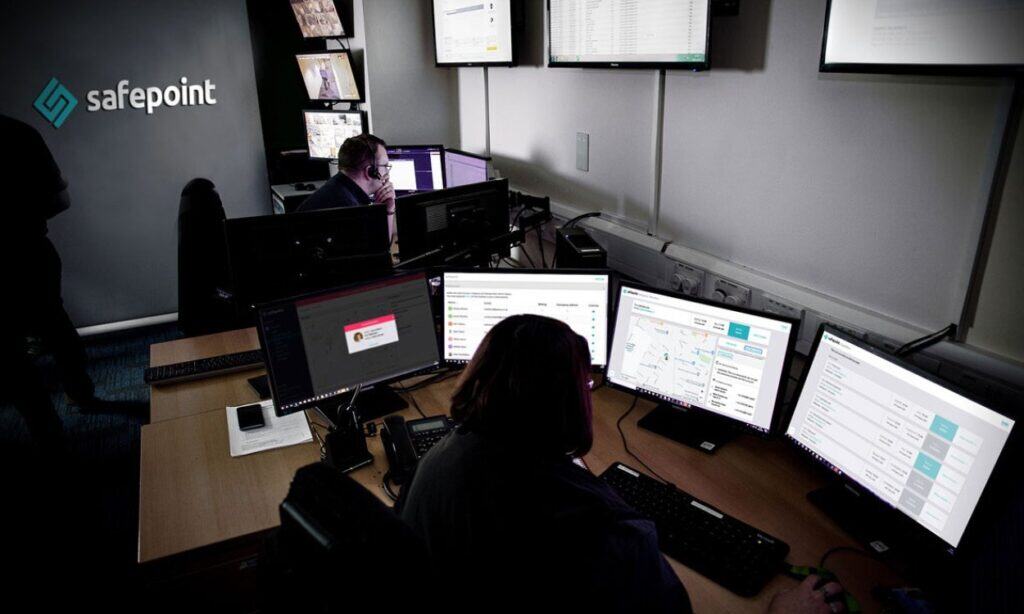
24/7 professional protection – with Safepoint’s GuardianPlus Alarm Receiving Centre, your staff can get the peace of mind of round-the-clock supervision. If a staff member raises an alarm, either manually or automatically, one of our accredited GuardianPlus responders will handle it. All members of the ARC are fully trained and qualified to handle every step of an alarm, from the first response to notifying a worker’s supervisors and escalating the situation with the emergency services.
Award-winning safety management tools and a fully accredited response team.